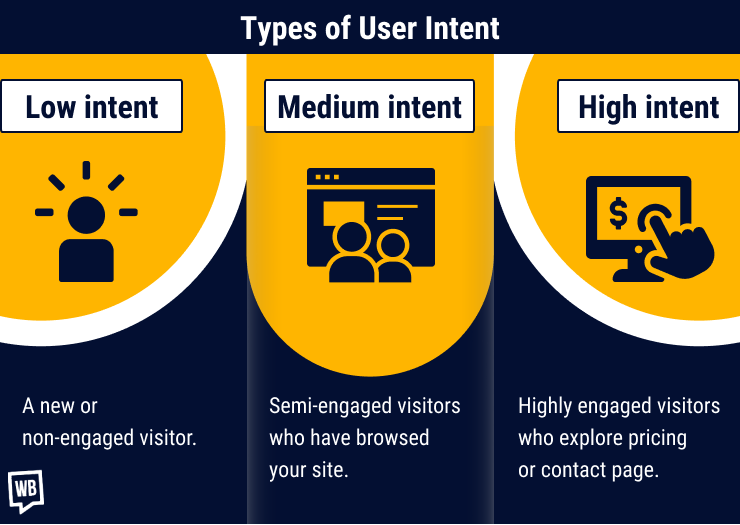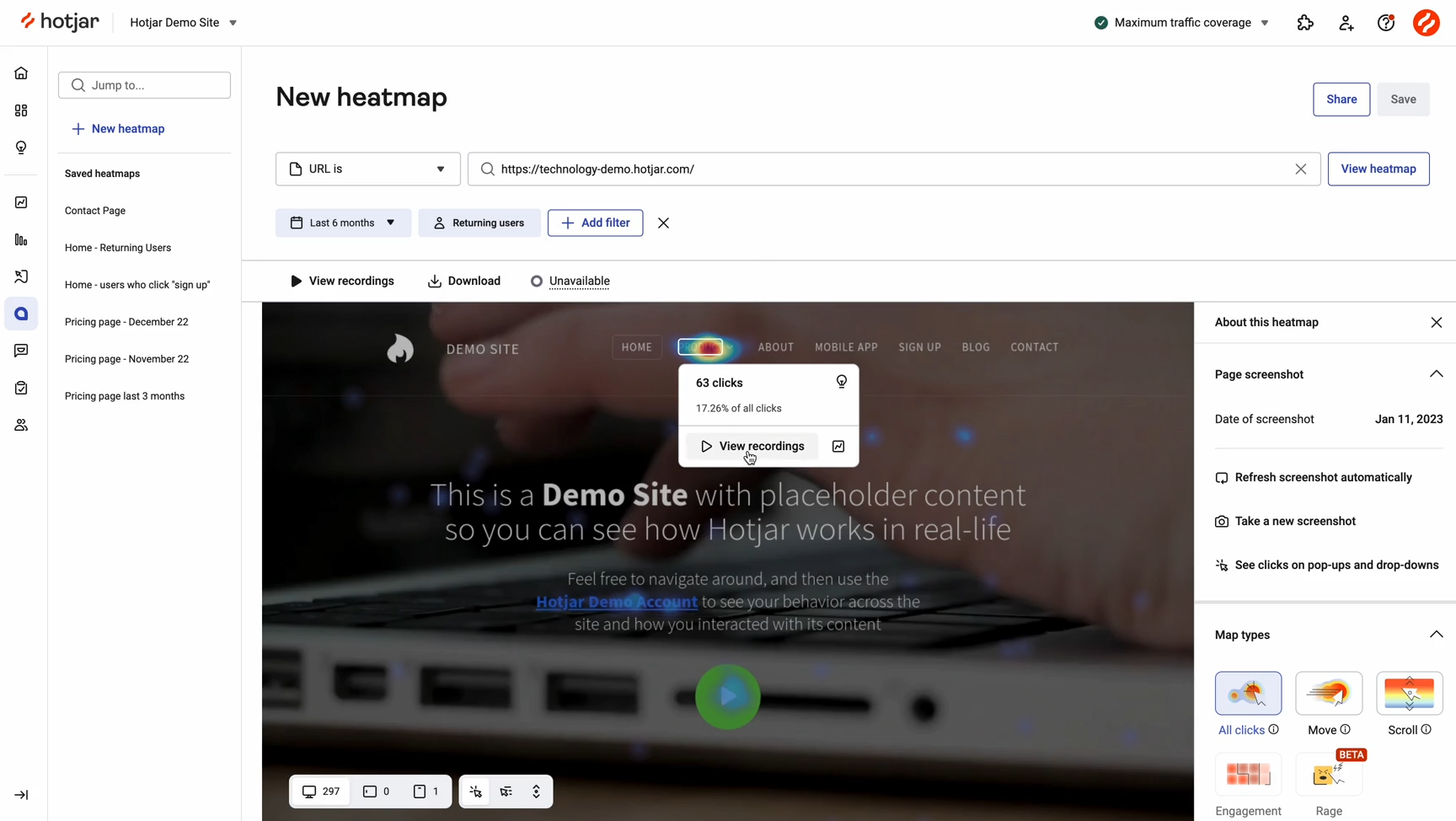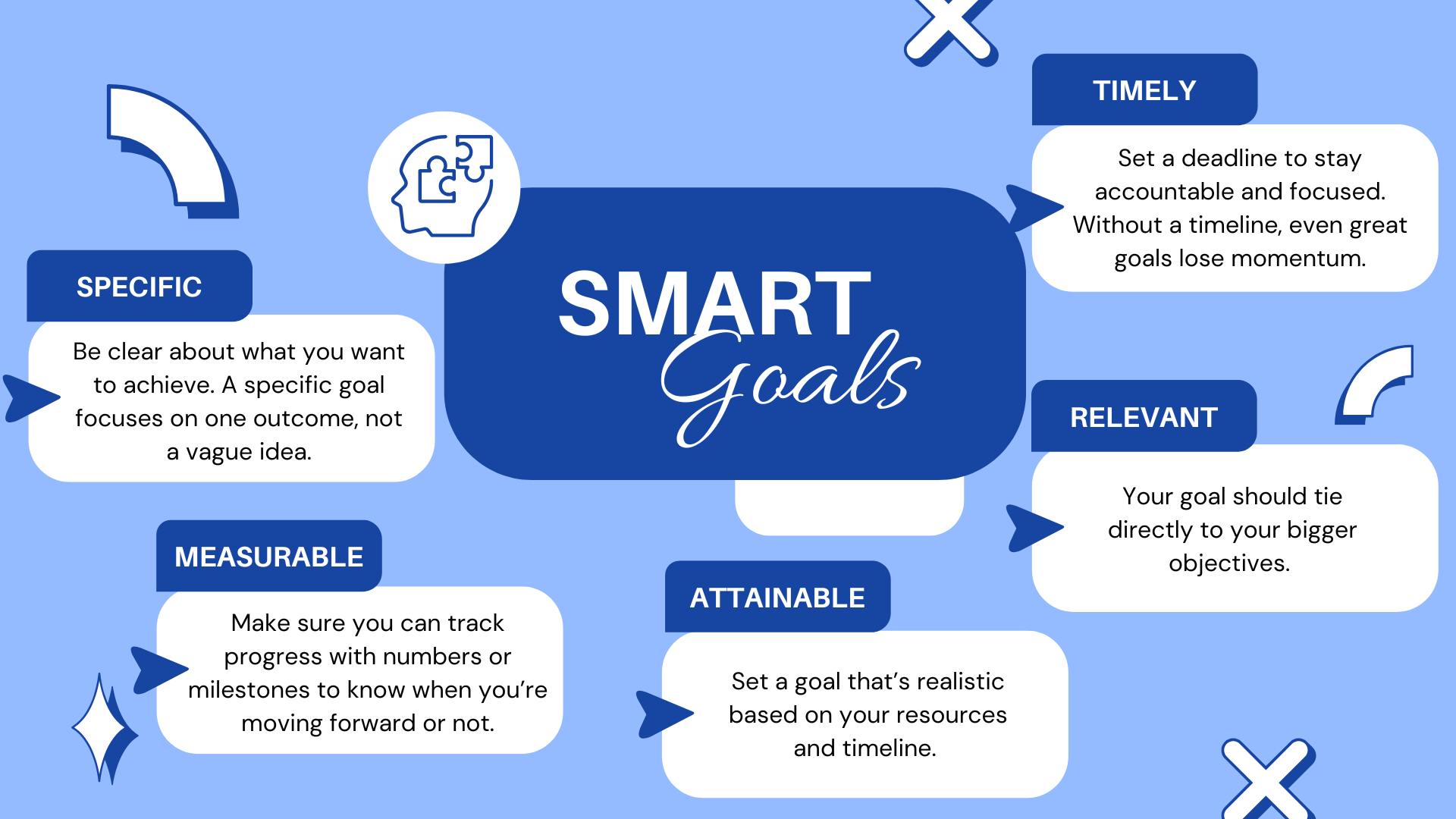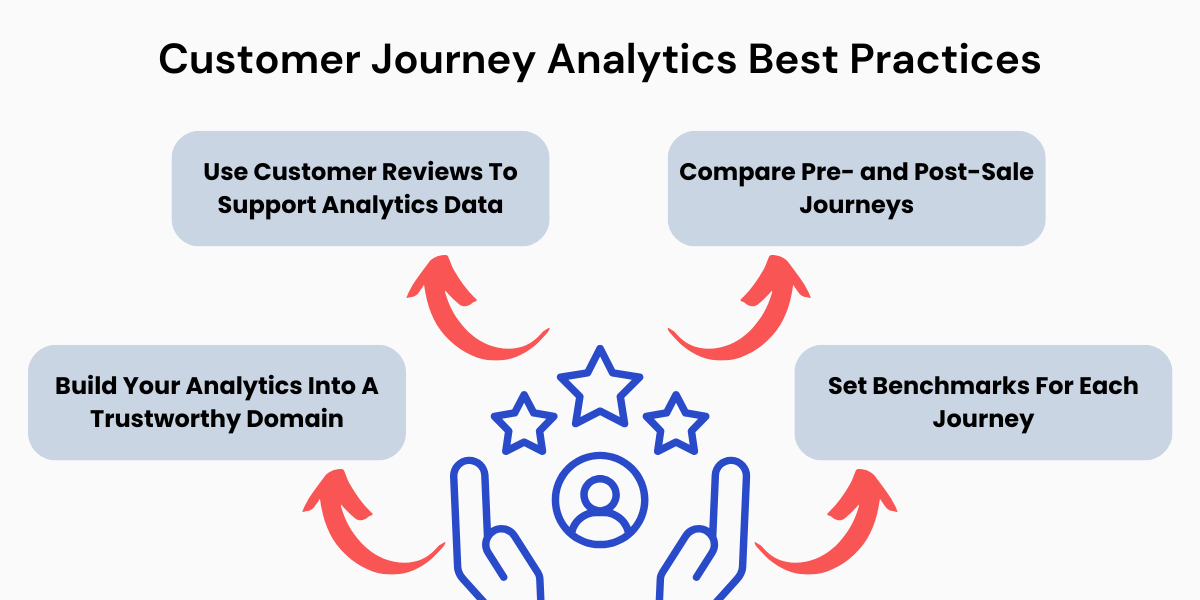You fix your website, tweak your ads, and launch new campaigns, and yet, customers still drop off at random points.
The real issue? You do not know what your customers are doing because you cannot see the full picture of their brand engagement journey.
In this article, we will explore what customer journey analytics is and its major benefits. We will also share how you can get started and the best practices to apply.
By the end of your read, you will know how to stop flying blind and follow your customers’ path across every channel to make smarter, data-driven decisions.
From Click To Conversion: Understanding Customer Journey Analytics
Customer journey analytics tracks and connects every action your customer takes, from the first click to the final conversion. It shows:
- Where they lose interest
- What catches their attention
- How people move through your business
Suppose you are in the sports accessories niche like this eCommerce brand for golf cart equipment. A customer clicks your Instagram ad for golf cart wheels, views the product, and then drops off at shipping details.
Two days later, they return, explore your enclosures, and finally buy both. Customer journey analytics shows:
- What grabbed their attention: An Instagram ad showing off-road golf cart wheels on a rugged trail.
- Where they lost interest: Shipping costs appeared too late in the checkout process.
- How they moved from casual browsing to a bundled purchase: A follow-up email offered a discount on wheels and enclosures when bought together.
How does it work?
It pulls data from customer journey touchpoints like your website, mobile app, emails, and ads. Here are the customer behavior touchpoints:

Then, it ties all those actions back to one person or session. So, instead of looking at scattered steps, you see the entire customer journey in one clear view.

In addition, there are a few moving parts. First, you have customer data collection, which grabs all the raw activity. Then comes identity resolution, which links actions across devices so you know it is the same person.
Journey mapping lays out the full path your customer takes, step by step. Finally, analytics tools help you explore the journey, segment users, and spot patterns in real time.
With this, you can build a timeline of customer interactions you can understand. You are watching the customer story unfold and getting ready to make smarter moves because of it.
Unlocking The Value: What You Gain From Customer Journey Analytics
Jot down quick talking points to convince your team to apply customer journey analytics and explain how it helps reduce drop-offs and create a smoother customer experience.
I. Prioritize High-Intent Customers

Customer journey mapping with analytics shows you user intent: Who’s serious, and who’s just browsing.
It reveals patterns you’d never catch on your own, like someone reading the return policy before checking reviews or visiting product guides after clicking an email. These quiet signals tell you who’s close to buying so you can act at the right moment.
For example, someone revisiting your skincare brand’s retinol serum FAQ after clicking a dermatologist’s testimonial is not just curious; they are checking for reassurance before buying. That is an intent-driven moment that you can capitalize on.
II. Stand Out In The Marketplace
Stand out among competitors with sharper timing, storytelling, and smarter messaging. Analytics lets you understand when they are ready to hear a message that sticks.
It shows how real customers move, hesitate, compare, and commit. That insight helps you meet customer expectations in ways that feel natural, not forced.
Suppose you have a fitness equipment brand. A shopper compares two rowing machines, spends time on the warranty page, and clicks into a blog post about building a home gym. Instead of sending a generic promo, you follow up with a short story about a customer who chose the same model to stay consistent while working from home.
With this, you turn browsing behavior into moments of connection through personalized, well-timed messaging.
III. Uncover Gaps Between Channels
Spot where your customer experience breaks down as people move across multiple channels. With your customer journey analytics software, connect those touchpoints and see what is not working, like strong engagement on Instagram but low follow-through on your site.
This is not about blaming one channel. It is about using customer journey data to spot where the message or experience falls apart. For example, a customer clicks a video ad for your ergonomic office chair, drawn in by the lumbar support feature, but your product page buries that detail under technical specs.
That is a gap you can fix fast. When you close those gaps, you increase your online presence in a way that feels seamless, not scattered, and that is how you stay ahead across multiple channels.
Laying The Groundwork For Smarter Customer Journey Tracking
Highlight the action points in each step so you can set up customer journey analytics with clarity and turn real customer behavior into practical, actionable insights you can use right away.
Step 1: Pick One Customer Journey To Track
When you first use customer journey analytics, it is tempting to track everything at once. But that causes clutter, not clarity. That is why it is smarter to pick one customer journey to track. It gives you focused customer insights tied to real business outcomes.
Think of it as watching a game film. You do not analyze every play in one go. You review one sequence to see what worked, what did not, and where to improve. The same applies here.
By narrowing in, you speed up how you learn from customer behavior and start making small but high-impact changes right away.
What To Do
Here are the different ways you can choose which customer journey to track first:
- Choose a journey with high drop-off rates.
- Follow a new customer from first visit to sign-up.
- Look at a journey that leads to your highest-value purchases.
- Start with your most common path (like the homepage to checkout).
- Track a post-purchase experience (like onboarding or first support interaction).
Step 2: List All The Touchpoints In That Journey
Before you dive into customer journey analysis, you need to see the full picture. That starts with listing every touchpoint in the journey you are tracking. Not just the obvious ones, all of them.
Why? Because you cannot fix what you cannot see.
Miss one key step, and you risk misunderstanding user behavior, blaming the wrong channel, or fixing a surface issue while ignoring the real pain points.
Let’s say you are in the health technology niche, selling these medical alert watches, and are tracking the customer journey from the homepage to checkout. Your key touchpoints can include:
- FAQ about battery life
- “Compare Plans” chart
- Fall detection feature page
- Popup offering a limited-time discount
If you skip any of these, you miss where customer engagement drops or user behavior shifts. Maybe visitors read the fine print on monitoring fees and exit. These touchpoints reveal hidden pain points that directly cause customer churn if you do not address them.
What To Do
Map the journey visually from start to finish. To do this, click through it like a customer and note every interaction. Going back to our example, pretend you are a first-time visitor looking for a medical alert watch for your parents.
Click the ad, land on the homepage, explore features, view pricing, check FAQs, and reach checkout. Capture each step as a visual representation so you clearly see where friction happens.
Make sure you check every channel involved, from ads to live chat. Review heatmaps or session recordings to spot hidden steps.

Step 3: Set A Clear Goal For What You Want To Learn
Now that you already picked one user journey to track and listed all the touchpoints where customers interact, it is time to get clear on what you want to learn from it. Use this step to give purpose to the data collected.
Without a goal, you just stare at numbers with no direction. With one, you turn insight into action.
For example, let’s say you have a meal delivery subscription service, and you are tracking the journey from the homepage to the meal plan selection on your meal delivery site. You mapped touchpoints like the menu preview, ingredient sourcing page, pricing breakdown, and customer reviews.
Now ask this: What do you want to uncover? Maybe you want to see why visitors drop off before selecting a plan or which touchpoints build enough trust to get them to commit.
What To Do
Look at your journey and touchpoints, then identify a clear friction point. For example, if many users view the pricing page but never choose a plan, your problem can be pricing confusion or lack of perceived value.
In addition, frame the problem in a way that helps you investigate. Ask something specific like: What causes users to drop off after viewing the meal plan options? A focused question like this guides your entire customer journey analysis.
You should also align your goal with a KPI and OKR to keep your analysis tied to real business outcomes instead of vanity metrics. Say you run a skincare subscription brand. Your goal is to find out why trial users don’t convert to full subscribers.
You align it with the KPI: Trial-to-paid conversion rate. Then, tie it to the OKR: Increase customer retention this quarter. Now, your analysis is not just about clicks; it is about solving a real problem that directly impacts revenue and long-term growth.
Finally, keep your goal SMART:

Set a goal like:
- Increase plan selection clicks by 15% within 30 days.
It is specific, measurable, realistic, and time-bound. That level of clarity helps you take action based on how customers interact with your touchpoints, not on guesswork.
Step 4: Choose A Tool That Fits Your Stack
You do not need the flashiest platform; you need one that fits your team, your tools, and your goals. Think of it like this: Choosing the right customer journey analytics tools is like hiring a team member.
If it does not work well with the rest of your setup, you will waste time forcing it to fit. Plus, when you are just starting, the wrong tool can:
- Slow you down
- Give you only half the picture
- Bury you in features you do not need
You need a tool that helps you analyze customer journeys clearly and quickly without breaking your workflow.
What To Do
Here’s how you can choose the ideal tool for you:
- Compare pricing based on features you will actually use.
- Prioritize ease of use so non-technical teams can access insights too.
- Consider AI and machine learning if your team wants predictive insights.
- Look for visual journey mapping features to track behavior across touchpoints.
- Check if it integrates with your current stack (like CRM, email, Google Analytics, and other web platforms).
Customer Journey Analytics Best Practices You Will Actually Use
Highlight one best practice you can apply this week to improve how you analyze customer journeys and turn customer behavior into clear, confident decisions.

A. Build Your Analytics Into A Trustworthy Domain
Track and collect customer data on a secure, branded domain your visitors recognize and feel safe engaging with.
Why is this a best practice? Because trust drives behavior.
No matter how well you map journeys or use advanced analytics tools, if people do not trust your site, they will hesitate or leave. That hesitation blocks valuable customer emotions you need to measure. You also risk losing access to sensitive data if visitors bounce before engaging.
How To Apply
Work with a provider like ShortDot to get credible, short domain extensions. We have different domain extensions for various industries like creator commerce:

Here are additional ways to make your domain an advantage:
- Use a branded domain for landing pages, not a third-party tracking link.
- Avoid redirects that mask your real domain, as they can trigger distrust or block tracking from privacy-conscious browsers.
- Secure your domain with HTTPS to build baseline trust and protect sensitive data.
- Match your domain branding across all channels (ads, emails, landing pages) so customers feel confident clicking through.
B. Use Customer Reviews To Support Analytics Data
Pull insights from honest feedback to understand how people experience your product at different touchpoints. They help you spot emotional triggers, product concerns, and unexpected wins that shape customer satisfaction.
Suppose you are a B2B business like this retail mannequin provider. Your analytics show people visit your mannequin product page but do not always buy.
Now, look at the reviews. One customer was so delighted that they named their mannequin Olivia. Another had a minor issue but raved about your fast support.

These reviews reveal what your dashboard cannot: Emotional hooks, trust builders, and small friction points that matter. When you use that along with your analytics data, you stop reacting to metrics and start understanding their full story.
That clarity helps you improve not just one step but the entire journey, which lets you increase trust, loyalty, and even customer lifetime value.
How To Apply
- Match reviews to behavioral data to see patterns.
- Note emotional tone (frustrated, excited, confused).
- Highlight common phrases customers repeat across reviews.
- Tag reviews by journey stage (e.g., pre-purchase, onboarding, support).
- Feed review insights into your support and product teams to close the loop.
- Pull language directly into your messaging to reflect real concerns or motivations.
C. Compare Pre- and Post-Sale Journeys
Many businesses obsess over getting the sale but miss what happens next. That is a problem. Pre-sale behavior shows curiosity and hesitation. Post-sale behavior shows trust, satisfaction, or regret.
If those do not match, something is off. For example, you might have messaging that sets high expectations but an onboarding flow that drops the ball. Maybe your customer experience initiatives kick in too late.
Compare both sides to spot disconnects that quietly hurt retention and referrals.
How To Apply
- Compare engagement with pre-sale content vs post-sale resources.
- Overlay support ticket trends with journey stages to uncover weak spots.
- Match pre-sale questions with post-sale complaints to find messaging gaps.
- Track where customers spend time before and after the sale to spot behavior shifts.
D. Set Benchmarks For Each Journey
Define what “good” looks like at every key step of the customer experience so you can measure progress, not just collect data.
Why do this?
Without clear benchmarks, your customer journey analytics solution is just a dashboard of moving numbers. You will end up reacting to spikes or dips without knowing what is normal or worth fixing.
Benchmarks give you context. They help you spot subtle wins, early red flags, and long-term trends. Even better, they make reporting more actionable.
Instead of saying, “Our cart abandonment rate is 60%,” you can say, “We are 10% above our benchmark, and here’s why that matters.”
How To Apply
- Set time-to-conversion goals for each stage of the journey.
- Use repeat visit frequency to gauge early signs of retention.
- Compare support ticket volume against post-purchase journey patterns.
- Monitor engagement rates by channel and flag anything below your baseline.
- Track the average time spent on high-intent pages to define healthy engagement.
Conclusion
Start with a quick review of your biggest drop-offs: Abandoned carts, unanswered questions, or support overload. Choose one journey to improve. Then, use customer journey analytics to spot what is helping, what is hurting, and what needs fixing.
Set one clear goal, define a metric that matters, and take focused action. Avoid chasing every insight. Focus on what moves the needle right now. Once you see results from that one journey, apply the same approach to the next.
Want a quick way to jumpstart the process?
Build trust right out of the gate with ShortBond. When you use credible, clean domains, customers feel more confident exploring your site, clicking your links, and staying connected across channels. Contact us now, and let’s see how we can grow your brand.

Burkhard Berger
Author Bio
Burkhard Berger is the founder of Novum™. He helps innovative B2B companies implement revenue-driven SEO strategies to scale their organic traffic to 1,000,000+ visitors per month. Curious about what your true traffic potential is?
Gravatar: vip@novumhq.com
